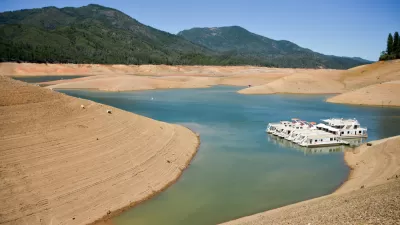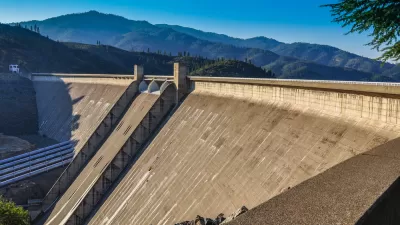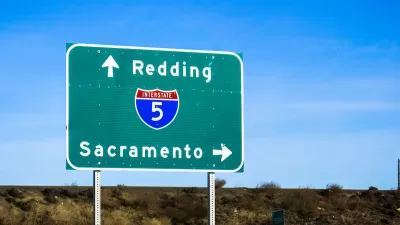A project to raise the height of the Shasta Dam, dead in the water before the Trump administration, is moving forward now that a former lobbyist for the project is the secretary of the U.S. Department of the Interior.

A controversial project to raise the height of the Shasta Dam on the Sacramento River in Northern California has been a favorite of Westlands Water District for years, but scientists at the U.S. Department of the Interior resisted the idea due to expected environmental impacts on sensitive habitat for endangered and threatened species.
David Bernhardt, the secretary for the U.S. Department of the Interior, is a former lobbyist for the Westlands Water District, and now the Shasta Dam project's prospects are improving. According to an article by Coral Davenport, "the project is going forward now, in a big win for a powerful consortium of California farmers that stands to profit substantially by gaining access to more irrigation water from a higher dam and has been trying to get the project approved for more than a decade."
According to Davenport, the Shasta Dam isn't the first example of the Interior Department moving forward on a project to the benefit of Bernhardt's former employer. "Mr. Bernhardt also promoted the weakening of an endangered-species regulation that would get Westlands more water, a move that has put him under scrutiny from his department’s inspector general," according to Davenport.
The Shasta Dam provides the main ammunition for this narrative of implied conflict of interest. "Under Mr. Bernhardt’s leadership, the Interior Department has disregarded its own scientific and legal analysis showing that raising the Shasta not only would be environmentally damaging and cost-prohibitive, but it would also be illegal under California law," reports Davenport.
Meanwhile the Fish and Wildlife Service, which works under the umbrella of the Interior Department, is moving forward with a new environmental review for the project, which is already being questioned for neglecting to analyze the effects on salmon habitat downstream of the dam.
FULL STORY: The Interior Secretary Wants to Enlarge a Dam. An Old Lobbying Client Would Benefit.

Maui's Vacation Rental Debate Turns Ugly
Verbal attacks, misinformation campaigns and fistfights plague a high-stakes debate to convert thousands of vacation rentals into long-term housing.

Planetizen Federal Action Tracker
A weekly monitor of how Trump’s orders and actions are impacting planners and planning in America.

San Francisco Suspends Traffic Calming Amidst Record Deaths
Citing “a challenging fiscal landscape,” the city will cease the program on the heels of 42 traffic deaths, including 24 pedestrians.

Defunct Pittsburgh Power Plant to Become Residential Tower
A decommissioned steam heat plant will be redeveloped into almost 100 affordable housing units.

Trump Prompts Restructuring of Transportation Research Board in “Unprecedented Overreach”
The TRB has eliminated more than half of its committees including those focused on climate, equity, and cities.

Amtrak Rolls Out New Orleans to Alabama “Mardi Gras” Train
The new service will operate morning and evening departures between Mobile and New Orleans.
Urban Design for Planners 1: Software Tools
This six-course series explores essential urban design concepts using open source software and equips planners with the tools they need to participate fully in the urban design process.
Planning for Universal Design
Learn the tools for implementing Universal Design in planning regulations.
Heyer Gruel & Associates PA
JM Goldson LLC
Custer County Colorado
City of Camden Redevelopment Agency
City of Astoria
Transportation Research & Education Center (TREC) at Portland State University
Jefferson Parish Government
Camden Redevelopment Agency
City of Claremont





























